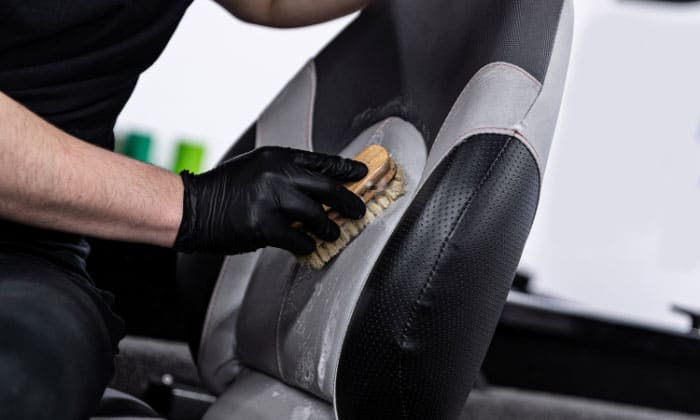Steaming summer days on the water are blissful until mildew rears its ugly head, lurking on your pristine boat seats. These unsightly and odorous stains can not only ruin your boating experience but also compromise the integrity of your upholstery. Fear not, as we dive into the depths of effective mildew removal, empowering you to restore your boat seats to their former glory.

Image: www.boatingbasicsonline.com
Unveiling the Culprit: What is Mildew?
Mildew, a type of fungus, thrives in warm, humid environments. It feeds on organic matter, such as fabrics and upholstery, leaving behind telltale black, gray, or green stains. Neglecting mildew growth can lead to weakened fabrics, unpleasant odors, and respiratory issues.
Preventing Mildew: Proactive Measures
Prevention is always better than cure. Implementing moisture control strategies can significantly reduce the likelihood of mildew formation. These include:
- Keep your boat dry: After each use, use a soft cloth or squeegee to wipe down seats and remove excess water.
- Allow air circulation: Ensure adequate ventilation by opening hatches and windows after every ride or storage period.
- Cover seats when not in use: Use breathable covers to protect seats from rain and UV damage.
- Store in a well-ventilated area: When not in use, store your boat in a dry, well-ventilated place with good air circulation.
Expert Advice: Battling Mildew Effectively
If prevention fails, immediate action is crucial to eliminate mildew. Here’s how:
- Identify the extent of mildew: Examine seats thoroughly to assess the severity and extent of mildew growth.
- Select the appropriate cleaning solution: Choose a mildew-specific cleaner recommended for marine fabrics.
- Test the cleaner in an inconspicuous area: Ensure the cleaner does not damage the fabric or cause discoloration.
- Apply the cleaner: Use a soft cloth or brush to gently apply the cleaner to the affected area, working in sections. Rinse thoroughly with water.
- Natural alternatives: Vinegar or baking soda solutions can also be effective in removing mildew, but test on an inconspicuous area first.
- Drying is essential: After cleaning, allow the seats to air dry completely in a well-ventilated area or use a fan to speed up the process.
- Repeat the process: If necessary, repeat the cleaning process to remove any remaining mildew. Follow the manufacturer’s instructions for the cleaner used.

Image: www.boatingbasicsonline.com
Frequently Asked Questions: Resolving Common Mildew Concerns
Q: Can I use bleach to remove mildew?
A: While bleach may be effective in killing mildew, it can damage marine fabrics, leading to discoloration or weakening. Stick to mildew-specific cleaners designed for delicate upholstery.
Q: How often should I clean my boat seats to prevent mildew?
A: Regular cleaning is key. Ideally, clean your boat seats after every use or at least monthly, especially during humid or wet seasons.
Q: What if the mildew has caused damage to my boat seats?
A: Severe mildew growth may require professional cleaning or repair. Consult a marine upholstery specialist for assistance.
How To Get Mildew Out Of Boat Seats
Conclusion: Reclaim Your Pristine Boat Seats
Reclaiming your pristine boat seats from mildew’s clutches is achievable by embracing proactive prevention strategies and effective cleaning techniques. Remember, consistency is key. Regular cleaning, proper storage, and maintaining a dry environment will keep mildew at bay, ensuring a comfortable and enjoyable boating experience for seasons to come.
Are you interested in effectively preventing and removing mildew from your boat seats? Share your experiences and ask any questions below, and our team will be happy to assist you in keeping your marine upholstery fresh and mildew-free.